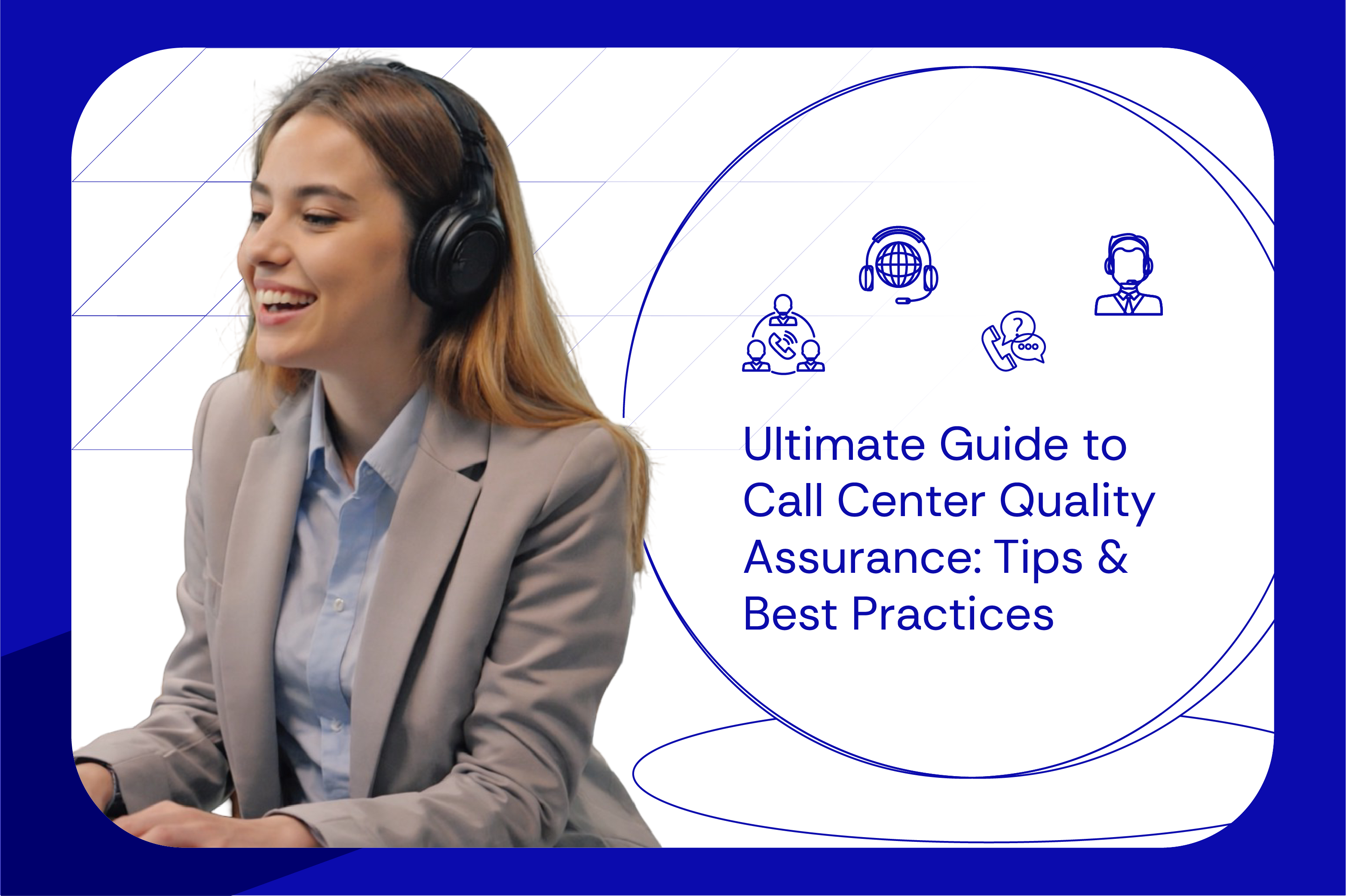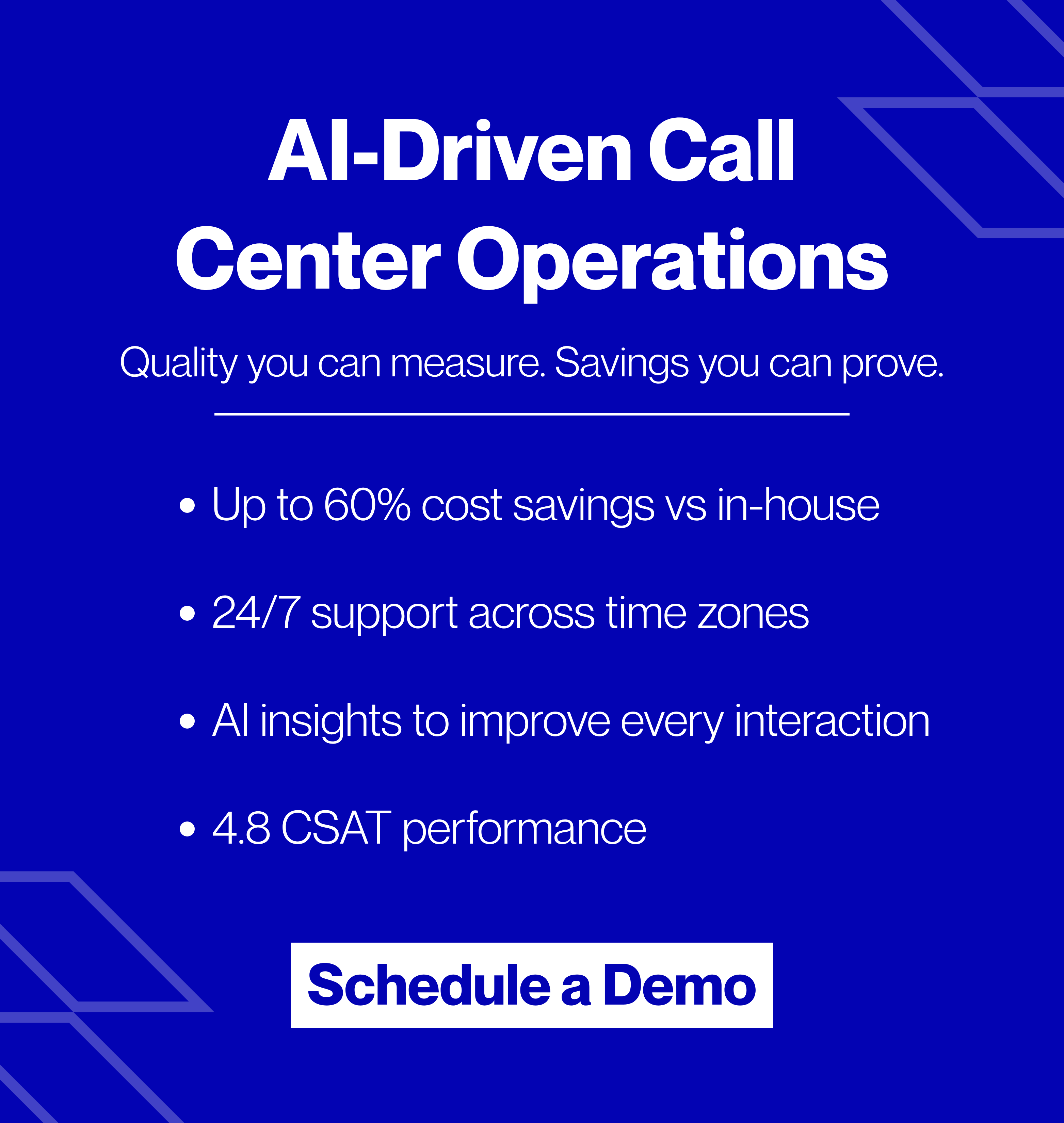Key Takeaways for 2025
- Call center quality assurance ensures consistent, high-quality customer interactions.
- Regular call monitoring & coaching improve agent performance and customer satisfaction.
- AI & automation help streamline QA and boost efficiency.
- Empowering agents with feedback, training, and rewards leads to better call outcomes.
- For CX leaders at consumer brands and D2C companies, QA is a strategic way to reduce churn and strengthen loyalty.
Why Does Call Center Quality Assurance Matter?
Let’s be honest—calling customer service isn’t exactly most people’s idea of fun. Long wait times, repetitive explanations, and unhelpful reps? No thanks.
But when it’s done right? In 2025, a call center outsourcing program can be a brand’s secret weapon for customer loyalty. That’s where contact center quality assurance best practices come in.
So, what is call center quality assurance? It’s the process of monitoring, evaluating, and improving customer interactions to ensure consistency, efficiency, and top-notch service. It’s about making sure every call meets high standards, reps are performing at their best, and customers walk away happy (instead of frustrated).
For consumer brands and D2C companies in competitive markets like the US, UK & Australia, QA is more than a tool, it’s a CX strategy. Leaders at the VP, Sr. Manager and Director level use QA to maintain service quality, optimize performance and protect revenue.
Data backs this up:
- Microsoft found that 97% of customers say customer service impacts their brand loyalty.
- Businesses that improve customer experience see revenues increase by up to 20% while reducing costs by as much as 20%.
- 78% of customers who feel a company delivers excellent service will remain loyal, even after a mistake.
1. Define Clear Quality Standards
If you don’t define what “good” looks like, your agents are left guessing. And guess what? Inconsistent service means unhappy customers. That’s why every great call center needs a rock-solid QA framework. One of the most critical call center quality assurance guidelines is establishing a transparent QA framework, with measurable standards for every call.
Start with a call quality scorecard. This isn’t just some corporate checklist—it’s the recipe for success. It breaks down exactly what agents should focus on in every conversation:
- Did the agent sound warm and professional or robotic and rushed?
- Did they actually resolve the issue or just pass the customer around?
- Did they balance speed with quality, or drag things out unnecessarily?
- Were they following protocols or improvising?
Once you have these standards in place, score every call against them. High-performing call centers often use a 1–10 scale for each interaction. Agents who consistently score above 90% on empathy, efficiency and compliance are not only high performers, they set the benchmark for CX excellence.
Transparency is key. Your agents should know exactly what’s expected of them. When expectations are clear, performance rises.
2. Monitor and Review Calls Regularly
If you’re not actively monitoring calls, how do you know what’s really happening? Are agents following scripts but missing the human touch? Are customers repeatedly calling back about the same problem?
Monitoring is at the core of contact center quality assurance best practices. Random call reviews and AI-driven speech analytics are essential in 2025.
Imagine this: A QA manager reviews five random calls per agent each week. They notice one agent nails the greeting but struggles with efficiency, while another sounds robotic. That’s instant coaching.
AI-powered speech analytics takes this further by analyzing thousands of calls to identify patterns—frequent complaints, overused phrases, or recurring billing issues. This scale of insight is valuable for growing consumer brands that need to resolve issues quickly.
Call monitoring isn’t about nitpicking—it’s about improvement, consistency, and customer satisfaction.
3. Provide Constructive Feedback
The best agents want to improve. Coaching should feel supportive, not punitive. If feedback feels like a scolding, it won’t work. If it feels like a collaboration, it will.
Best practices:
- Make it a two-way conversation: “How do you think that call went?”
- Highlight wins first, then areas for improvement.
- Use actual call recordings for examples.
- Keep feedback specific and actionable.
The goal is simple: agents should leave coaching motivated to deliver better service.
4. Train Agents on Soft Skills and Empathy
Customers don’t just want their problems solved—they want to feel heard. A technically skilled but emotionally distant agent can still damage loyalty.
Ways to strengthen empathy and soft skills:
- Train on active listening and customer validation.
- Encourage creative problem-solving beyond scripts.
- Use role-playing for real-world scenarios.
- Teach de-escalation techniques that prevent escalations.
Small shifts in language and tone can transform the customer experience.
5. Leverage AI / Automation for Smarter QA
Manual reviews and spreadsheets no longer scale. In 2025, CX leaders are adopting AI-powered QA platforms that detect sentiment shifts, silence duration and escalation risks in real-time.
Benefits include:
- Real-time issue detection and alerts.
- AI-driven call scoring to expand coverage beyond the typical 1% audit rate.
- Automation of repetitive QA tasks so managers can focus on coaching.
AI doesn’t replace humans—it augments them, helping QA teams focus on what matters most: insights and coaching.
6. Encourage Agent Self-Assessment and Peer Feedback
Empowering agents to review their own calls fosters ownership. Add peer feedback and you build a culture of continuous improvement.
- Let agents review their own calls.
- Encourage sharing of best practices across peers.
Normalize feedback so it feels like growth, not scrutiny.
7. Track and Improve on Key QA Metrics
QA isn’t about guesswork. It’s about data. Essential metrics for 2025 include:
- First Call Resolution (FCR)
- Average Handle Time (AHT)
- Customer Satisfaction (CSAT)
CX-focused leaders use these insights to track performance, take corrective action, such as increasing peak-hour staffing or improving call routing.
8. Reward High-Performing Agents
Recognition drives engagement. QA should not feel like surveillance—it should feel like an achievement.
Ways to reward success:
- Incentives for top QA scores.
- Recognition in team meetings.
- Gamification with leaderboards and team challenges.
Motivated agents create better experiences, and better experiences build customer loyalty.
When agents are excited about hitting QA goals, customer experience naturally improves.
Final Thoughts
When a call center runs smoothly, customers feel heard, issues are resolved quickly, and loyalty grows. The best QA programs focus on:
- Clear quality standards.
- Ongoing training and coaching.
- AI-powered insights.
- Strategic alignment with business goals.
Handling QA in-house can feel overwhelming. That’s why many brands outsource QA to specialized teams.
At Atidiv, we partner with CX leaders across the US, UK & Australia to deliver QA programs that combine 24/7 monitoring, trained analysts and AI-powered insights. Our approach ensures that every interaction strengthens your customer relationships.
Partner with Atidiv to scale smarter!
FAQs on Call Center Quality Assurance
1. What exactly is call center quality assurance, and why does it matter?
Think of call center QA as the secret sauce that keeps customer interactions smooth, professional, and actually helpful. It’s all about monitoring and improving calls so customers get fast, friendly, and effective service—not frustrating, robotic responses. And here’s the kicker: Businesses that nail QA see higher customer satisfaction, better agent performance, and even revenue growth.
2. How do you measure call quality?
It’s not just about “sounding nice” on the phone—QA looks at real performance metrics. We track things like First Call Resolution (FCR) (are problems solved the first time?), Average Handle Time (AHT) (are calls efficient but not rushed?), and Customer Satisfaction (CSAT) (are customers actually happy?). AI tools and QA scorecards help analyze these calls in detail—because data doesn’t lie!
3. What’s the best way to give agents feedback without making them feel micromanaged?
Simple: make it a coaching moment, not a scolding session. Start with what they’re doing well, then show them exact examples of how they can improve (instead of just vague criticism). Even better? Let them listen to their own calls and self-assess—it’s way more effective than just hearing feedback from a manager.
4. Can AI replace human call center quality assurance?
AI is amazing at spotting patterns, flagging trends, and automating the boring stuff (like speech analytics and sentiment tracking). But when it comes to coaching, handling tricky situations, or adding a human touch? AI still can’t compete with experienced QA professionals. The best approach is a hybrid model—AI for efficiency, humans for insight and connection.
5. Why should businesses outsource their call center QA?
Outsourcing provides 24/7 monitoring, expert analysis, scalability, and AI-driven insights, without overloading internal teams. For growing brands, outsourcing enables faster scaling and consistent customer experiences.

